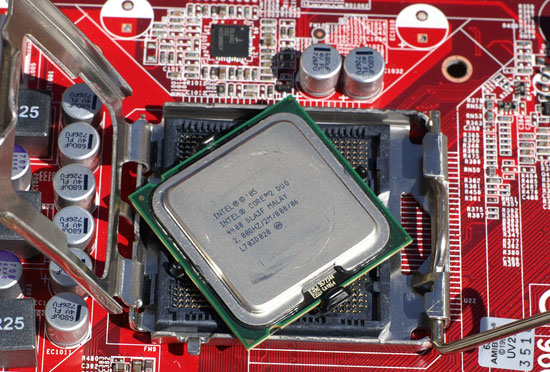Midrange CPU Roundup: It's Time to Buy
by Anand Lal Shimpi on September 28, 2007 2:00 AM EST- Posted in
- CPUs
Pricing
The price wars of 2007 have left the mainstream CPU market unbelievably competitive, here's the price breakdown for all of the contenders featured in today's review:
Looking at the prices, the matchups are basically as follows:
AMD Athlon 64 X2 5000+ vs. Intel Core 2 Duo E4500
AMD Athlon 64 X2 4800+ vs. Intel Core 2 Duo E4400
AMD Athlon 64 X2 4000+ vs. Intel Pentium Dual-Core E2160

As a reference point we included the Core 2 Duo E6550 in our performance charts to give you an idea of how these mainstream CPUs compare to some of the faster options we're used to benchmarking. The E6550 is clocked at 2.33GHz, uses a 1333FSB, has 4MB of cache, and is priced at around $175. Performance is roughly equal to that of the E6600.
The price wars of 2007 have left the mainstream CPU market unbelievably competitive, here's the price breakdown for all of the contenders featured in today's review:
| Price Comparison | |
| CPU | Price |
| AMD Athlon 64 X2 5000+ (2.6GHz) | $125 |
| AMD Athlon 64 X2 4800+ (2.5GHz) | $115 |
| AMD Athlon 64 X2 4400+ (2.3GHz) | $94 |
| AMD Athlon 64 X2 4000+ (2.1GHz) | $73 |
| AMD Athlon X2 BE-2350 (2.1GHz) | $91 |
| Intel Core 2 Duo E4500 (2.2GHz) | $133 |
| Intel Core 2 Duo E4400 (2.0GHz) | $113 |
| Intel Pentium Dual-Core E2160 (1.8GHz) | $74 |
| Intel Pentium Dual-Core E2140 (1.6GHz) | $64 |
Looking at the prices, the matchups are basically as follows:
AMD Athlon 64 X2 5000+ vs. Intel Core 2 Duo E4500
AMD Athlon 64 X2 4800+ vs. Intel Core 2 Duo E4400
AMD Athlon 64 X2 4000+ vs. Intel Pentium Dual-Core E2160

As a reference point we included the Core 2 Duo E6550 in our performance charts to give you an idea of how these mainstream CPUs compare to some of the faster options we're used to benchmarking. The E6550 is clocked at 2.33GHz, uses a 1333FSB, has 4MB of cache, and is priced at around $175. Performance is roughly equal to that of the E6600.










44 Comments
View All Comments
Darth Farter - Friday, September 28, 2007 - link
why not the cool & quiet idle power numbers?seeing they're running at full speeds at idle is besides the point of an "idle" measurement in this age with powersavings...
tnx though on the bios update request from asus... I want to tweak my timings too.
Anand Lal Shimpi - Friday, September 28, 2007 - link
C&Q and EIST were both enabled for the idle and load power numbers. Actually all the benchmarks were run with those settings enabled.Take care,
Anand
archcommus - Friday, September 28, 2007 - link
I realize the benchmarks are run at 1024x768 to make the tests CPU-limited, does that mean all, or at least most, of the extra horsepower needed for resolutions above that comes from the GPU? If so, does that mean I could run games at 1280x1024 well with a high-end card and one of the AMD CPUs from this round-up? Or would that be a bad match-up? If that would work it's an appealing upgrade path alternative to jumping platforms.nosfe - Friday, September 28, 2007 - link
why not color code those performance graphs so that we can easily see which processors are competing at the same price